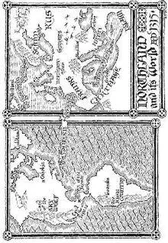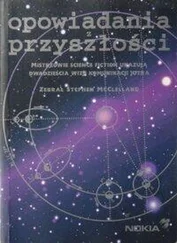And, someday, maybe, visit them.
14
THE CASE OF THE CYLINDRICAL BIOLOGIST
Polyphemus and Pandora: what evocative names!
In giving these new worlds names from classical mythology, their discoverers followed a tradition that dates back to 1781, when the British astronomer Sir William Herschel discovered the solar system’s seventh planet, the first found beyond the wandering bodies visible to the naked eye that had been known since before humans were humans. Eventually the new planet was named Uranus, in Greek mythology the personification of heaven and the son and husband of Gaia, the Earth goddess—though Herschel had hoped to name it Georgium Sidus, in honour of King George III: a planet called George!
In myth, Polyphemus, with a name meaning “very famous,” was a Cyclops, a cannibalistic one-eyed giant encountered by Odysseus in Homer’s Odyssey . It seems an apt name for a giant world dominated by a single glaring-eye storm. And to the Greeks, Pandora, whose name means “giver of all,” was the first woman. Out of curiosity she opened up the famous “Pandora’s Box” (actually a jar), thus releasing all the evils of mankind, leaving only Hope inside the box as consolation. Certainly it seems appropriate that a world as fecund as Pandora should be given the name of the Greek Eve.
(There are in fact already two astronomical Pandoras in our solar system. One is a main belt asteroid discovered in 1858, a rock about sixty kilometres across. The other is the seventeenth moon of Saturn, an even more battered lump of rock around a hundred kilometres long by eighty wide, which shepherds the outermost of Saturn’s rings, following a very complex and chaotic orbit.)
But if you were to follow Jake Sully down the ramp off the Valkyrie, it’s probably not the moon’s name you’d be thinking of in your first moments on Pandora, but its low gravity.
Colonel Quaritch is suspicious of Pandora’s low gravity. He obsessively pumps iron to avoid being made “soft” as a result.
Pandora’s gravity is about eighty per cent of Earth’s. Its diameter is three-quarters of Earth’s, and its mass about half; in size it’s a world somewhere between Earth and Mars, which has around one-third Earth’s gravity.
But Pandora’s air is thicker, about twenty per cent denser than Earth’s. You might wonder how a low-gravity world can hold on to a thick atmosphere, as Pandora evidently does. On any world air molecules can be heated to “escape velocity” and just fly off into space, like tiny spacecraft. A battering by the solar wind, charged particles from the sun, adds to that leakage as well. The lower the gravity, the more air will escape to space. Thus our moon with around a sixth Earth’s gravity is all but airless.
But gravity isn’t the only factor when it comes to a world keeping its air. Titan has around the same gravity as the moon, but, as we saw in Chapter 7, its atmosphere is more massive than Earth’s. This is because it is so cold out there at the orbit of Saturn; Titan’s air molecules move much more slowly, on average, and fewer escape. On the other hand Venus, only a tad smaller than Earth, has a much more massive atmosphere than the Earth because it’s too hot; all the heavy carbon dioxide that’s locked up in the rocks on Earth is baked out into the air on Venus.
Leakage of an atmosphere can be surprisingly slow too. It’s thought that an Earthlike atmosphere somehow delivered to one-third-gravity Mars (perhaps as part of a “terraforming” project, making Mars into a second Earth) would take around ten million years to leak away. That’s a slow enough process for a civilisation to manage an artificial atmosphere if it had to (recall the air machines on Burroughs’ Barsoom). There are natural inputs to a planet’s air too, from outgassing via volcanoes, and impacts from comets. And there are other special factors. Pandora orbits between radiation belts surrounding its primary Polyphemus, which deflect the charged-particle wind from the sun. This is evidently a complex question; a world’s lower gravity does not imply it must have thinner air.
But what effect would a different gravity have on living things?
Galileo was able to figure out the basic physics of gravity and bodies back in 1638: “It would be impossible to fashion skeletons for men, horses or other animals which could exist and carry out their functions [proportionally] when such animals were increased to immense weight…”
This work was the origin of the famous “square-cube law.” If you double the size of an animal, its cross-section goes up as the square of the size—four times—but its volume, and therefore its mass, goes up as the cube—eight times. This basic rule is central to “biomechanics,” the discipline of how living things are put together mechanically. This means that you couldn’t just double the size of an elephant in some genetic-engineering brainstorm and expect it to function; its four-times-thicker muscles wouldn’t be able to raise its eight-times-greater weight.
Ah, but what if you transported said elephant to a lower-gravity world, like Pandora?
There’s a difference between mass and weight. Mass is a resistance to motion. You would have the same mass even in zero gravity, in space. You get weight in a gravity field. Weight is mass multiplied by the acceleration due to gravity, which is approximately ten metres per second per second on Earth. Weight is the load you have to carry around. In space you would still have mass, but no weight.
We all have a maximum weight we can bear, given the strength of our bones and muscles. But in a lower gravity field, you could carry around more mass: higher mass times lower gravity comes out to the same weight. How much more mass depends on the weakness of the gravity.
Humans have complicated geometries, so let’s simplify things. There’s an old joke about the farmer who’s having trouble with his milk production, and he calls in theoretical physicists from the local university to help. After weeks of intensive study, back comes the report which begins: “Consider a spherical cow…” (Well, it made me laugh.) The point is, to figure out basic principles, scientists will often make simplified models of the real world to make the calculations easier, even if the models are somewhat unlike the real thing.
And in that spirit, consider a cylindrical biologist.
Here’s Dr. Grace Augustine, standing tall on Earth, probably giving some RDA desk jockey a hard time. She could be represented by a pillar a bit less than two metres tall, say twenty centimetres diameter. The pressure she’s exerting on the bones holding her up is her weight divided by her cross-sectional area.
Now let’s suppose we stretch her up by twenty-five per cent, without making her any wider. She’ll still be shorter than the average Na’vi, at around three metres. Her mass has gone up twenty-five per cent, and so has her weight, but her cross-section hasn’t changed. So the pressure on her bones is up twenty-five per cent too.
That could be a problem, if we kept stretching her. Grace’s bones can support only a certain maximum weight, because beyond that the pressure would overcome the binding energy of her bones’ molecules; the bones would splinter and Grace would fall. So, in a given gravity field, and with bones of a given strength, there is a limit on Grace’s height—and indeed her mass—unless you thicken up her bones like an elephant’s.
But now let’s whisk Tall-Grace to Pandora. The gravity here is eighty per cent of Earth’s. And so, though her mass is unchanged, her weight (twenty-five per cent more mass times eighty per cent gravity) is the same as Short-Grace’s back on Earth, because the lower gravity has cancelled out the extra height. And thus the pressure on Tall-Grace’s bones is as low as it was for Small-Grace back on Earth, and she feels no discomfort.
Читать дальше










